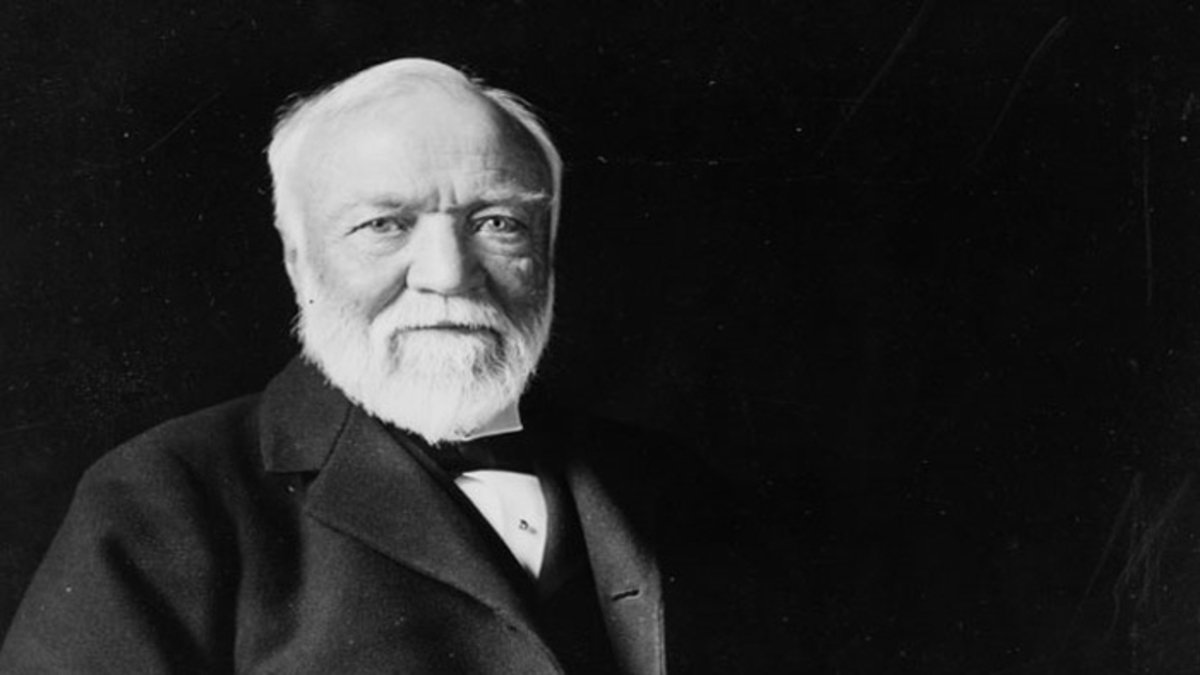Business
Andrew Carnegie | The success story of one of the greatest entrepreneurs
Published
4 years agoon

Andrew Carnegie was an industrialist and philanthropist. Carnegie pioneered the expansion of the American steel industry in the late 19th century and became one of the wealthiest Americans in history. In addition, Carnegie also became a leading philanthropist in America and the British Empire. During the last few years of his life, he gave away around $5.2 billion, almost 90% of his fortune, to several charities and foundations. At the age of 12, he migrated to the United States from Scotland. During this time, his family suffered from poverty, and Carnegie had to work in a cotton factory from a young age. By the late 1880s, Andrew Carnegie built the Carnegie Steel Company into one of the largest and most profitable steel companies in the world. Here’s his success story.
Early life and struggles
Andrew Carnegie was born on November 25, 1835, in a town called Dunfermline, located in Scotland. Carnegie and his family lived in a typical weaver’s cottage with only one main room that they shared with the neighbouring weaver’s family. When he was 12, his father faced hardships as a handloom weaver, and the country faced starvation. To help make ends meet, his mother sold potted meats, making her the primary breadwinner. In 1848, the family decided to migrate to Pennsylvania, United States to find a proper job and escape starvation. To support his family, Carnegie started working 12 hours a day in a Pittsburgh cotton factory at the age of 13.
In the year 1849, Carnegie started working as a telegraph messenger boy. He worked hard and memorized all the locations of Pittsburgh’s businesses and faces of important people. This allowed him to make connections. In addition, Carnegie could translate signals by ear, without using a paper slip. His willingness to work hard, determination, and intelligence helped Carnegie seek new opportunities. At the age of 18, he started working as a telegraph operator for a railroad company. During these years, Carnegie learned about railroad management and the market which would help him later on in his steel business.
Andrew Carnegie’s career
In 1855, Andrew made his first investment in a messenger train. During this time, railroads were becoming one of the biggest businesses in America and he was already familiar with the market. Slowly and steadily, Carnegie accumulated capital and established businesses that supplied rails and bridges to the railroad. He continued to work for the railroad company and introduced several improvements in the service. In 1864, he established a steel rolling mill and control of industry became the source of his fortune.
After the Civil War, Carnegie shifted his focus from railroads to the ironworks trade. In Pittsburgh, he founded the Keystone Bridge Works and the Union Ironworks. In addition to having excellent business savviness, Andrew also possessed charm and literary knowledge. By the late 1880s, Carnegie Steel was the largest manufacturer of pig iron, steel rails, and coke in the world. Alongside being an industrialist, Carnegie was also a leading philanthropist and spent his final years on philanthropic projects. He gave away almost US$5.24 billion of his wealth and after his death. His last $30,000,000 was given to foundations and charities. Carnegie died on August 11, 1919, of bronchial pneumonia.
Lessons we can learn
From living in a one-room house and facing severe poverty to becoming one of the greatest entrepreneurs in history, Andrew Carnegie’s story is very inspiring. His hard work, perseverance and intelligence helped him reach new heights and build an empire. His success story teaches us about hard work and determination. There is no shortcut to success.
Also read: Karan Wahi | The success story of this Indian actor and model
When did Andrew Carnegie start his business?
In the early 1870s, Carnegie co-founded his first steel company, near Pittsburgh.
What was Carnegie's net worth?
In his final years, Carnegie’s net worth was US$475 million.
You may like

Sam Altman Success Story: Triumphs, Failures, and Lessons Learned

Scent of Success: How VedaOils Became a Fragrance Oil Powerhouse in India?

Zerodha: The Most Successful Bootstrapped Startup in India

50Fin | Revolutionizing Financial Services with Instant Loans

Amit Gupta: The Visionary Entrepreneur Behind Yulu

Azhar Iqubal Co Founder of Inshorts Success Story

List of Brands Endorsed by Virat Kohli [Updated] 2015-2023

Facebook Page To $500M: : Meet Founder of Inshorts App Azhar Iqubal

Who is Radhika Gupta? New Shark at Shark Tank India 3

Himanshu Laul: Success Story of an Architect Turned Entrepreneur

Dua Lipa | Success Story Of The Incredible English Singer

Aman Gupta | Success story of the co-founder of boAt

MS Dhoni | Success Story of the Most Influential Cricketer

J.K.Rowling | The Inspirational success story of British Author

Falguni Nayar | Success story of the founder of Nykaa

Success Story of Rowan Atkinson [Mr. Bean]

Karan Dua | Success Story of the Indian Food Blogger

Ghazal Alagh | Success story of the co-founder of Mamaearth

Who is Ranjan Raj: From IIT-B to TVF’s Kota Factory


